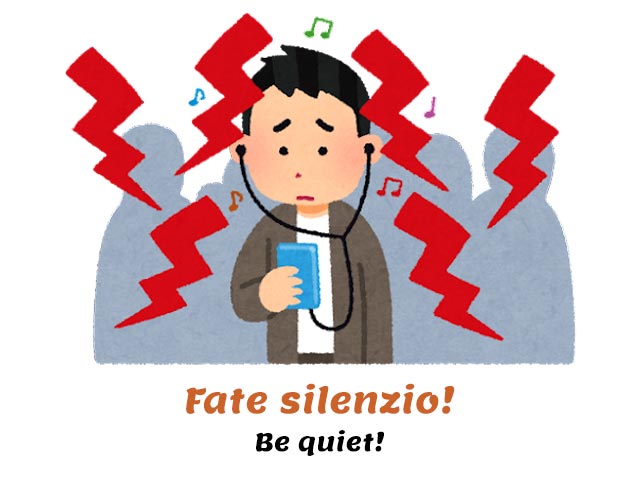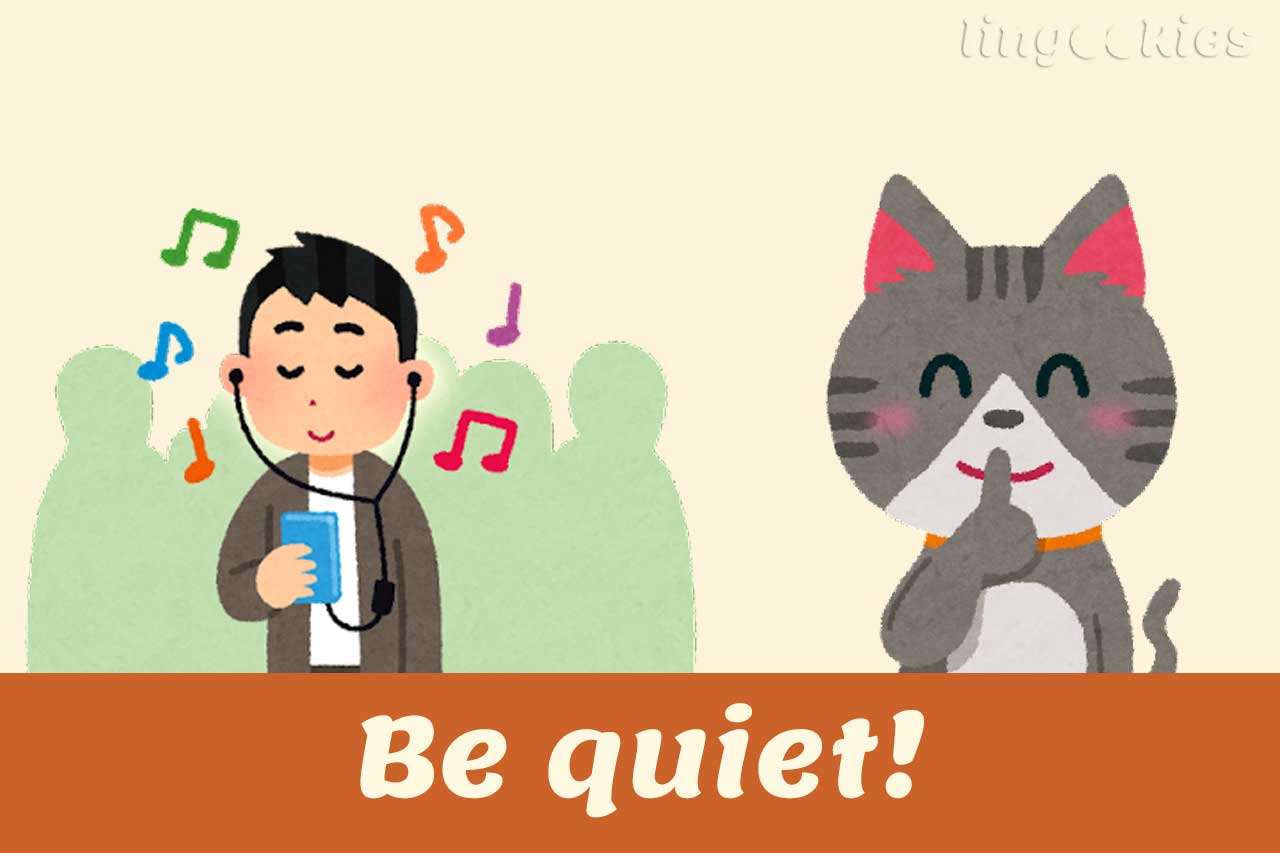How do you say it in Italian?
Fai silenzio!
| Pronunciation | |
| Words you should know | Fare (to do) + silenzio (silence) |
| When to use this | With 1 person you’re familiar with |
| When NOT to use this | With strangers and groups |
For example, you can say…
| Fai silenzio, per favore. | Please be quiet. |
| Fai silenzio, non riesco a concentrarmi. | Be quiet, I cannot concentrate. |
Fate silenzio!
| Pronunciation | |
| When to use this | With a group of people |
| When NOT to use this | With strangers and 1 person at a time |
In Italian, unlike English, there are two kinds of “you”. There is a singular “you” and then there is a plural “you”. If you are addressing a group, you must conjugate the verb fare according to the latter pronoun, which is voi.
| Fate silenzio! Sto studiando. | Be quiet! I’m studying. |
| Ragazzi, fate silenzio, per favore. Sto cercando di dormire. | Guys, please be quiet. I’m trying to sleep. |

Faccia silenzio!
| Pronunciation | |
| When to use this | With a stranger |
| When NOT to use this | With people you know well |
When speaking formally, Italians address each other with the subject “she”, lei. Use Lei in the written form if you want to be very polite.
I advise you not to use faccia silenzio when you are among people you don’t know well, as it is very direct and rather rude.
Other ways to say be quiet in Italian
Instead of using a conjugation of the verb fare, you can simply translate be quiet in Italian as silenzio!, following the behavior of quiet! in English.
| Silenzio! | Quiet! |
| Silenzio, tutti quanti! Ho sentito un rumore provenire dal giardino. | Quiet, everyone! I heard a noise coming from the garden. |
If you want to sound softer, you can add a per favore, please.
| Silenzio, per favore! | Quiet, please! |

Zitto, zitta, zitti and zitte are four exclamations that most closely translate into English as shut up. First, let’s hear how they are pronounced.
| Zitto! | Be quiet! (masculine singular) | |
| Zitta! | Be quiet! (feminine singular) | |
| Zitti! | Be quiet! (masculine plural) | |
| Zitte! | Be quiet! (feminine plural) |
Why four different versions? Zitto is an adjective and adjectives in Italian must agree in gender and number with the noun.
Here’s when you can use each of them:
- zitto to address a male person
- zitta to address a female person
- zitti to address a group of men or a mixed group
- zitte to address a group of women (with no men)
For example, you could say…
| Zitto, Marco! | Be quiet, Marco! |
| Zitta, Anna! | Be quiet, Anna! |
And so on. These are all pretty direct, so don’t use them when you need to be polite.

Another popular way to say be quiet in Italian is stai zitto, where stai is an imperative conjugation of the verb stare, to stay.
Like fai silenzio, stai zitto can only be used with one person at a time, but this time the choice is even narrower: one male person at a time.
Stai can also be shortened to sta’, with an apostrophe (NOT with an accent mark!).
| Stai zitto! | Be quiet! (masculine singular, informal) |
If you are addressing a woman, you must to say stai zitta, following the same adjective rule we saw in the previous paragraph.
| Stai zitta! | Be quiet! (feminine singular, informal) |
The plural for stai (singular you) is state (plural you). You need to distinguish between male/mixed and female groups.
| State zitti! | Be quiet! (masculine plural or mixed group, informal) | |
| State zitte! | Be quiet! (feminine group, informal) |
The polite form can be either stia zitto (if male) or stia zitta (if female). Of course, you shouldn’t use these forms unless you really, really mean it.
| Stia zitto! | Be quiet! (masculine) | |
| Stia zitta! | Be quiet! (feminine) |

The last way to say be quiet in Italian is taci, which comes from the verb tacere which means to shut up. This is quite aggressive.
As you probably already guessed, tacete and taccia are the plural and polite forms of taci, respectively.
| Taci! | Be quiet! Shut up! (singular, informal) | |
| Tacete! | Be quiet! Shut up! (plural) | |
| Taccia! | Be quiet! Shut up! (polite) |
More free Italian resources
You might want to keep learning Italian online with these free Italian resources:
❤️ If you liked this lesson on how to say be quiet in Italian, share it with your friends!


Just found your website. I think it is well done. Nice layout and good information.
Thank you, Tom!